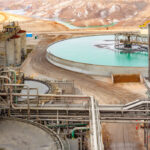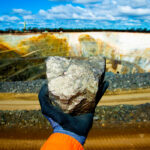Why is mining essential for creating a decarbonized economy?
The majors and the Juniors
There are two centers for global excellence in the global mining industry. Most countries have a mining industry, and the industry majors are listed on the TSX, ASX, NYSE, LSE, and Frankfurt.
The source of innovation and project development is in the middle market with the majors looking for A-class assets in A-class countries. The majors have leading technology and the money to implement it.
The juniors are low-cost, nimble, inventive, and resilient. Generally, the juniors are focused on getting their projects to a point where they are sold to a major with a cash payout or cash plus a carried interest. A common example of this is a farm-in. Many a junior wants a farm-in to one or more of its projects.
Market efficiency and investor trends in the mining sector
At Projects RH, we know that economic theory will tell us that markets behave differently if they are efficient or efficient in a semi-strong form.
The reality in mining is that most investor funds come increasingly through those which rely on analysts reviewing and examining materials issued by the companies.
In markets like Australia, many funds invest in the index or a surrogate for the index of the top 100 stocks regardless of market category. One of the features of the North American market but mainly found through US investors is that there are specialist sector investor funds and investor groups. Not only groups which will focus on "mining", "resources and energy", but also which will either focus on being incubators or on being weighted across the sectors top 20 global stocks.
What we are seeing is that independent analysts will follow the top 20 resources stock and they move towards a common approach and one set of publicly available data to a common fair market price.
Why the action happens
Mining is the process of extracting valuable minerals and other geological materials from the earth. These materials are essential to produce various goods and services that we rely on in our daily lives such as smartphones, laptops, cars, and renewable energy technologies.
Without mining, it would be impossible to meet the increasing demand for these products as we transition toward a decarbonized economy.
Here are three reasons why mining is essential to creating a decarbonized economy:
Supplying materials for renewable energy technologies:
Renewable energy technologies such as solar panels, wind turbines, and batteries require minerals and metals that can only come from being mined from the earth.
For example, rare earth elements like neodymium and dysprosium are crucial components in wind turbines, while lithium and cobalt are essential for electric car batteries. Without these minerals, the production of renewable energy technologies would come to a standstill, hindering our progress towards a decarbonized economy.
Moreover, as we continue to shift towards renewable energy sources, the demand for these minerals will only increase. This makes it even more important for the mining industry to keep up with this demand by developing sustainable extraction methods and finding new sources of these minerals.
Reducing carbon footprint:
Mining itself is often associated with negative environmental impacts such as air and water pollution.
However, when compared to other industries such as manufacturing and transportation, mining has a relatively low carbon footprint.
This is because mining companies have been investing in more efficient and sustainable practices in recent years.
For instance, advancements in technology have made it possible to mine for minerals in a more precise and targeted manner, reducing the amount of waste and energy required.
In addition, many mining companies are now using renewable energy sources to power their operations, reducing their reliance on fossil fuels.
Furthermore, as the demand for minerals and metals increases, companies are under pressure to find more sustainable ways of extracting them.
This has led to the development of new technologies and processes such as using bacteria to extract metals from ores, reducing the need for traditional methods that produce high levels of carbon emissions.
Enhancing economic growth and job creation:
Mining plays a significant role in driving economic growth and job creation.
In 2019, the mining industry contributed 2.9% to global GDP and supported 40 million jobs worldwide.
In countries where mining is a major industry, it is often the backbone of the economy and provides employment opportunities for local communities. This is clear in Canada, Australia, Chile, Colombia and South Africa.
In the transition towards a decarbonized economy, the demand for minerals and metals used in renewable energy technologies will only continue to grow.
This presents an opportunity for developing countries with rich mineral reserves to boost their economies and create jobs.
Moreover, mining companies are increasingly focusing on sustainable practices and investing in local communities affected by their operations.
This includes the UN’s 16 Sustainability Principles. Specifically providing education, training, and job opportunities for local residents, as well as implementing environmental restoration projects.
Such initiatives not only benefit the local communities but also contribute to creating a more sustainable future for all.
Where the action happens
The real action and risk-taking occur in small and mid-sized resources companies. Most of these companies faithfully follow the reporting requirements of their stock exchanges and securities laws.
Unfortunately, with our highly regulated environment, there is little "gold fever" seen in junior companies in the 2020s. In Canada, Australia, and most national markets, it is hard for a new company to raise more than USD 40m from the public. At Projects RH, we're seeing the sweet spot being USD 20m, funded by one or two people to push a project ahead.
Mining and resources, by its nature, always remain risky. There is not a community of investors looking for formulaic investment opportunities, such as what we see in green energy.
Instead, we have the following criteria for potential investors:
- USD 100m investment
- 100 MWh capacity
- PPA at 11.7c
- Mini ROI 14%
- Min ROE
- PPA with good credit
Mining is unpredictable due to fluctuating commodity prices.
Local markets and a global industry
Most of the mining industry is driven by international markets with a few exceptions. While generally, most mining is for a global market or price taker, there have always been exceptions.
The classic example is the local coal mine for a mine-mouth power station. The coal mine was generally financed and operated to support the power project (“coal by wire”), and the transport price of the coal was driven by the price available for the power.
In many cases, this was seen as a public good, with the power project and the mine being seen as a public service.
Countries such as Panama, which built coal-fired power projects with little local coal, became importers, and countries like Colombia became exporters.
Where exports went was largely a matter of transport costs and the calorific value of the coal - but there were league tables to look at.
Most other commodities trade based on index prices like the LME (London Metals Exchange) price for copper.
Globally, there are price indexes for iron ore, crude, lithium, gold, silver... with accepted adjustments for grade and freight.
Funding the juniors: bridging the gap in commodity cycles
Given the global focus on producers and majors, the defect in the system is funding the juniors who need to prove their resources and mine designs before they get to construction-ready.
Many of these projects have done the really hard work and proven their resource/reserves, but they need large amounts of money to commercialize their project.
Today, the stories of the swings in the price of commodities now have huge impacts on government budgets as their impact on national budgets via royalty collections, which are commonly expressed as a percentage of sales.
The swings in prices are a matter of supply and demand but this impacts not only on producing mines but on those seeking to raise capital to fund bankable feasibility studies through to the construction of the mine.
Funding for junior sector is tricky
The new challenge is funding the junior sector. Yes, these may be cost effective in getting resources projects to the construction-ready stage.
The fluctuations in prices are driven by the extractive industries consuming their resources and constantly seeking new projects.
These price swings enable more people to demonstrate their project's ability to meet investor thresholds, while also becoming more attractive to major industry players.
A trade-off for the greater good?
There is little new in the global supply and demand struggle with the resulting change in prices.
What Is different is that the majors do little if any exploration and the production chain is dependent on juniors finding willing private investors. The rules for private placements are becoming harder due to consumer investor protection, thus placing more pressure on wealthy individuals and specialist funds to be willing to act counter-cyclical so that projects are ready for funding by those ready, willing, and able to invest just before the curve moves.
In over three centuries this has not been a smooth process and as we look at the Projects RH client list this is not changing.
Do you agree that our community must accept a limited trade-off between disturbing the environment in a local area to restore balance across a larger area and for the common good of many?
By Paul Raftery, CEO of Projects RH. We are happy to receive questions or comments at paulraftery@projectsrh.com
------------------------
Source:
Grenville, S.; “Future Made in Australia: Treasury provides sanity in net zero transition”, The Weekend Australian. 1-2 June, 2024.







